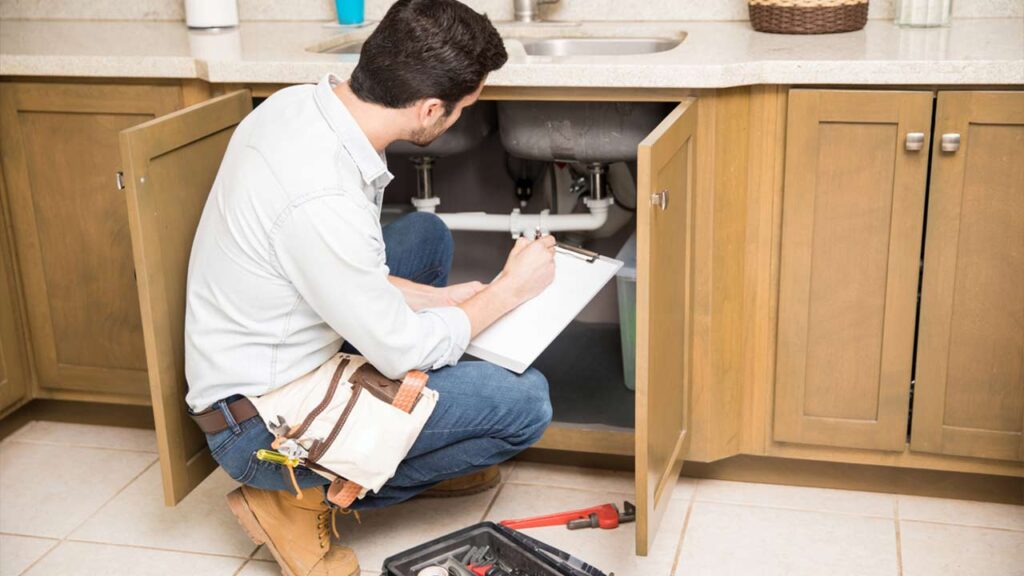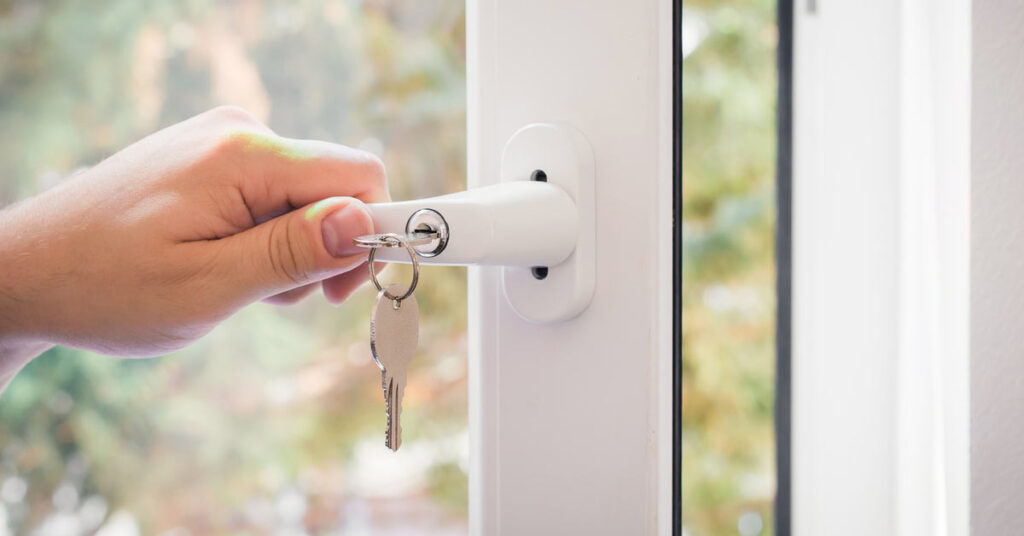In general, people buy home warranties as a sort of financial safety net by covering potentially costly repairs or replacements of major systems and appliances due to wear and tear. However, many people are left frustrated with their coverages as plans can vary widely between providers and often exclude items like outdoor systems, damages from misuse, and may not cover pre-existing conditions. If you are looking to get a home warranty, be sure to carefully review the terms for any limitations and cost caps, as these can influence the overall value and effectiveness of the warranty to prevent financial surprises that come with significant repairs.
Key Takeaway
If you are getting a home warranty, read the fine print. Remember that they only cover items that fail due to normal wear and tear. Here are certain items one might cover:
- Major systems (HVAC, AC)
- Plumbing systems (pipes, drains)
- Electrical systemes (writing, outlets)
- Appliances (oven, washer)
Table of Contents
- What Does a Home Warranty Cover?
- Extended and Optional Coverage
- What A Home Warranty Does NOT Cover
- Cost Considerations
- What Repair Costs Would a Home Warranty Cover?
- Managing Claims and Repairs
- Pros and Cons of A Home Warranty
- Factors for Choosing a Home Warranty Provider
- Common Home Warranty Complaints
- Final Thought
What Does a Home Warranty Cover?
Most home warranty plans offer coverage for a range of major appliances that you would use on a daily basis, such as a refrigerator, oven, dishwasher, built-in microwave, garbage disposal, or clothes washer and dryer. Coverage for these appliances ensures that if they break down, again from normal wear and tear, the repair or replacement is handled through the warranty provider as subject to the terms specified in the contract.
HVAC systems are also commonly covered under standard home warranty plans. This includes both heating and cooling units, such as furnaces, central air conditioning systems, and often heat pumps. Note that coverage usually extends to most components and parts of these systems. Moreover, electrical system failures are also typically covered and include most components of the home’s internal electrical systems, such as wiring, switches, and circuit breakers. In this case, a warranty helps to prevent the high costs and dangers associated with electrical failures. However, note that modifications or upgrades to meet new codes or corrective work on previously faulty installations may not be included.

Plumbing coverage under home warranties generally includes leaks and blockages in the water, drain, gas, waste, or vent lines, along with toilets, shower heads, and other plumbing fixtures. However, limitations often exist; external components such as the main sewer line, sprinkler systems, and faucets might not be covered, or may require additional premium.
Here is a comprehensive list of what most home warranties may cover:
Major Systems
- HVAC (Heating, Ventilation, and Air Conditioning) Systems
- Furnaces
- Air conditioning units
- Ductwork
Plumbing Systems
- Pipes
- Drains
- Faucets
- Water heaters
- Electrical Systems
- Electrical panels
- Wiring
- Switches
- Outlets
Appliances
- Kitchen Appliances
- Refrigerators
- Ovens/ranges
- Dishwashers
- Built-in microwaves
- Garbage disposals
- Laundry Appliances
- Washers
- Dryers
Be sure to note that a home warranty is distinct from homeowners insurance which covers damage from events like fires, storms, and theft. Homeowners insurance is mandatory for most mortgage holders, providing a broader coverage against significant losses, while a home warranty is optional and more focused on mitigating the costs of home maintenance.
Extended and Optional Coverage
Extended and optional coverage is typically available with many home warranty plans. This feature allows you to tailor your contracts to meet specific needs such as added coverage for a pool or spa, for an additional fee. This option could be appealing if you face high potential repair costs for these luxury items and prefer to manage these expenses through regular warranty payments. Moreover, garage door openers for instance are frequently covered under extended home warranty options. Here are further examples of additional coverage options:
Additional Home Warranty Coverage
- Garage Door Openers
- Ceiling Fans
- Trash Compactors
Optional Home Warranty Coverage
- Pools and Spas
- Septic Systems
- Well Pumps
- Additional Refrigerators or Freezers
- Sump Pumps
- Second HVAC Systems
What A Home Warranty Does NOT Cover
Exclusions and Limitations
Understanding what a home warranty does not cover is as important if not more important than understanding what it does. Home warranties come with specific exclusions and limitations that should be carefully reviewed to avoid surprises when filing a claim. Generally, home warranties do not cover non-mechanical items such as windows, doors, walls, and structural components. Additionally, items that fail due to neglect, lack of maintenance, or improper installation are also typically excluded from coverage.
Another exclusion involves pre-existing conditions. For instance, home warranties usually do not cover systems or appliances that were known to be malfunctioning or were in disrepair before the warranty was purchased. This is often verified during an inspection or inferred from maintenance records. Hence, try to resolve any known issues prior to purchasing a warranty to ensure you get more comprehensive coverage.
Here is a detailed list of what Home Warranties Typically Do Not Cover:
- Pre-existing conditions not detected during home inspections.
- Cosmetic issues such as scratches, dents, or paint.
- Structural components like walls, roofs, windows, and doors.
- Outdoor items like sprinklers.
- Non-essential items like ceiling fans (unless specifically added).
- Repairs or replacements due to misuse, neglect, or failure to maintain the equipment.
- Items already covered under a manufacturer’s warranty.
- Damage due to natural disasters, theft, or vandalism.
- Commercial-grade appliances or systems.
Regarding financial limitations, most home warranties impose caps on repair or replacement costs, which can vary significantly between contracts. These caps are typically set per item or per repair visit and can affect the feasibility of certain repairs under the warranty. For example, if a HVAC system needs replacement, which could cost several thousand dollars, the warranty might only cover a portion of that cost, leaving you as the homeowner responsible for the balance, out-of-pocket. Make sure you have these caps memorized before choosing a warranty to ensure it aligns with your potential needs and individual financial circumstances.
Moreover, remember that a home warranty only covers issues stemming from normal wear and tear of home systems and appliances. So, as another example, let’s say that your dishwasher breaks down and causes flooding due to a failure of its internal components, a home warranty would likely cover the repairs or replacement of the dishwasher itself. The warranty might also cover damages caused by the water if such coverage is explicitly included in the terms of the warranty. Often, however, while the appliance repair or replacement is covered, the consequential damage (like flooding damage to floors or walls) may not be, unless specified.
Cost Considerations
When it comes to cost considerations, there are many factors to consider before determining that you need a home warranty. For instance, along with the initial cost of the coverage plan, a home warranty involves a service fee, which is paid each time a service provider responds to a claim to diagnose or fix a problem. This fee typically ranges from $75 to $125 per visit, depending on the provider and the plan chosen. This fee is generally non-refundable, regardless of whether the issue is deemed covered under the warranty terms. For instance, here is an outline of what you might expect from some commonly used companies and how prices might vary for a certain warranty plan and additional costs:
| Company | Plan Pricing | Service Fee |
|---|---|---|
| $480 – $1,000+ | $75 – $125 | |
| $480 – $720 | $60 | |
| $432 – $456 | $75 | |
| $518 – $709 | $75 – $125 | |
| $300 – $1,500 | $55 | |
| $336 – $480 | $100 – $150 |
When it comes to the coverage scope, home warranties typically do not cover the full replacement cost of high-value items. Instead, they may provide a contribution towards replacement, which can be significantly less than the actual cost of purchasing and installing a new model. This partial coverage is an essential for you to understand, especially if you have an older home with aging systems and appliances that are more likely to need costly replacements.
Moreover, if you have to make a claim for a covered appliance or system the replacement process follows specific guidelines set by the warranty provider. So, if an appliance or system fails and cannot be economically repaired, the warranty provider will replace the item with a similar model from one of the various suppliers and service companies that the warranty company has agreements with. Note that the selection process for replacements generally considers the functional equivalency rather than brand or aesthetic preferences. In other words, the replacement will serve the same primary function as the original item.
What Repair Costs Would a Home Warranty Cover?
So, to get a better understanding of what a home warranty might cover financially, let’s take a look at some of the bigger and smaller items that are usually covered under a typical home warranty. Then to determine if a home warranty would be worth it, let’s consider how often they may break down or need repairs as well as the comparative costs with and without a home warranty:
HVAC Systems (Heating, Ventilation, and Air Conditioning):
- Breakdown Frequency: HVAC systems, especially in regions with extreme temperatures, may need servicing at least once a year, with major components like the furnace or AC unit requiring significant repairs or replacements every 10 to 15 years.
- Cost of Repair/Replacement Without Warranty: Depending on the specific issue, repairs can range from $150 for minor issues to over $2,000 for major problems like replacing the compressor. A full system replacement can cost between $5,000 and $10,000.
- Cost With Home Warranty: Under a home warranty, the homeowner would only pay the service fee, typically between $65 to $125, for each repair visit. Major replacements that exceed the coverage limit might require additional out-of-pocket expenses but would still be significantly reduced compared to full price.

Electrical Systems:
- Breakdown Frequency: Home electrical systems generally require attention once every few years unless major issues or updates are needed due to wiring insufficiencies or safety standards.
- Cost of Repair/Replacement Without Warranty: Minor electrical repairs, like fixing outlets or switches, might cost between $100 to $300, while major wiring repairs can cost upwards of $1,000 to $3,000.
- Cost With Home Warranty: With a home warranty, the homeowner would typically be responsible for the service call fee only, significantly reducing the cost burden of electrical maintenance and repairs.
Plumbing Systems:
- Breakdown Frequency: Plumbing issues can arise occasionally, especially in older homes. Common problems include leaky faucets, running toilets, and clogged drains, which might need attention every year or two.
- Cost of Repair/Replacement Without Warranty: Repairing minor leaks or clogs can cost between $150 and $350, while major plumbing jobs like replacing a water heater or fixing a sewer line can range from $500 to over $1,000.
- Cost With Home Warranty: Homeowners with a warranty would pay the service fee for each incident, potentially saving hundreds to thousands of dollars on more significant plumbing repairs.
Smaller Appliances:
- Garbage Disposals: Garbage disposals typically need servicing or replacement every 5 to 10 years. Without a warranty, repair costs for garbage disposals generally range from $100 to $400, depending on the severity of the problem or the need for a full replacement. But remember, under a home warranty, repairs or replacement involve a service fee, which is typically $65 to $125.T
- Ceiling Fans: Ceiling fans require servicing for issues like motor failures or electrical problems every few years. Repairing a ceiling fan can cost between $100 to $250, which again, may or may not be worth it considering a service fee under warranty.
- Garage Door Openers: Garage door openers typically require repairs related to motor failure or alignment issues every 5 to 10 years. The cost to repair or replace a garage door opener can range from $150 to over $300, depending on the complexity of the issue and the model. In this case, the home warranty would cover the repair or replacement cost beyond the service fee, reducing the financial impact.
So, what does all of this information mean? Well, it means that while the upfront cost of a home warranty can sometimes be significant, the potential savings on the expensive and unforeseen home repairs for those major home appliances, like HVAC systems, could make it a worthwhile investment, especially for those in older homes or with older appliances and systems. However, for smaller items, such as for a ceiling fan, it may not make that much of a difference nor be worth it to have the home warranty.
However, when it comes down to it, the true value of a home warranty varies based on a variety of factors. For instance, one must consider the condition of the home when buying, the age of its systems and appliances, and your ability as the homeowner to handle unexpected repairs without a warranty. For example, for new homeowners, the value of a home warranty can be a good investment if the home includes older appliances or systems that might soon need repairs as discussed. In this case, the warranty can act as a financial aid during the initial years of homeownership, which often involves more purchases and investments into the home’s construction and furnishing. Alternatively, if you are building a new home with all new appliances, it may not be a worthwhile investment to handle these items that are expected to last. Therefore, be sure to assess your individual factors to determine if a home warranty is a good investment for you.
Managing Claims and Repairs
Filing a claim with a home warranty involves a step by step process. When a covered system or appliance fails, the homeowner must contact the warranty provider, usually through a customer service line or an online platform. The provider then assesses the claim and dispatches a contractor from their network to diagnose the issue. This contractor will determine if the repair is covered under the terms of the warranty and, if so, will proceed with the necessary repairs or replacement.
Filing a claim with your home warranty involves a few straightforward steps:
- Check Your Coverage
- Contact Your Provider
- Describe the Issue
- Service Appointment
- Pay the Service Fee
- Technician Inspection
- Repair or Replacement (if covered)
- Follow-Up with your provider
- Keep Records for future reference

The types of repairs covered by home warranties generally include mechanical failures of covered appliances and systems due to normal wear and tear. This can range from a broken dishwasher or malfunctioning furnace to electrical issues or plumbing blockages. Remember that warranties do not cover repairs due to misuse, cosmetic damages, or structural issues, nor do they cover items that have been improperly installed or poorly maintained.
Regarding the choice of contractors, most home warranty companies require homeowners to use contractors within their network as mentioned to ensure that the work is done by vetted professionals and to control costs. This can limit the homeowner’s ability to choose a contractor. To ensure claims are approved, be sure to maintain good records of maintenance and repairs and provide clear, detailed information when filing claims in case of mishaps or disputes.
Pros and Cons of A Home Warranty
Pros of a Home Warranty
One of the primary benefits is reduced repair costs; home warranties can significantly decrease the out-of-pocket expenses for repairs or replacements of covered appliances and systems. They also offer convenience by providing a single point of contact for all repair needs, and they give homeowners peace of mind by protecting against unexpected breakdowns and related costs. Additionally, having a home warranty can increase the value of a home, as it can be transferred to new owners, making the property more attractive to potential buyers. Another advantage is that warranties help stabilize home maintenance costs, aiding in more predictable financial planning.
Cons of a Home Warranty
There are also downsides to consider. Homeowners are required to pay a service fee each time a repair person is dispatched, which can accumulate over time. Warranties often have coverage limitations, excluding certain repairs or not covering components due to pre-existing conditions or inadequate maintenance. Homeowners also have limited choice in selecting contractors, as warranty providers usually dispatch professionals from their own network. Furthermore, claims can sometimes be denied based on the terms of the warranty, which might cite reasons like improper maintenance or issues deemed outside the coverage scope. Lastly, the combined cost of annual premiums and service fees might exceed the typical expenses of repairs, rendering the warranty less cost-effective for some homeowners.
Factors for Choosing a Home Warranty Provider
Choosing the right home warranty provider is important for ensuring that you receive effective coverage and service. When selecting a provider, consider the company’s reputation, customer service track record, responsiveness, and the transparency of their contract terms. Reviews and ratings from independent organizations and customer testimonials can offer valuable insights into the reliability and customer satisfaction associated with different providers. Additionally, it is important to compare the specifics of coverage plans, including what is and isn’t covered as discussed, the limits on payouts, and the cost of premiums and service fees. Also look for customizable plans that allow you to select coverage that specifically matches your needs.
The age of your home significantly influences the type of home warranty coverage that might be most suitable. As mentioned, older homes are more likely to have systems and appliances that are near the end of their expected lifespans, and might require more comprehensive coverage. Some warranty providers might also have different terms or pricing structures based on the age of the home, reflecting the increased risk of system failures.
Homeowners can purchase a home warranty at any time, but the timing can affect the coverage. Many people opt to buy a warranty immediately after purchasing a home, particularly if the purchase did not include detailed disclosures about the condition of home systems and appliances. This strategy can provide peace of mind to new homeowners who have limited information about the maintenance history of their new home. In some cases, sellers may offer home warranties as part of the sale to enhance the appeal of the property, providing initial coverage that the buyer can choose to continue.
Common Home Warranty Complaints
It is important to discuss common complaints that many make when dealing with home warranty issues. One of the most common complaints about home warranties centers on claim denials and service delays. Customers often express frustration when claims are denied based on the warranty company’s determination that the issue resulted from pre-existing conditions, improper maintenance, or normal wear and tear that falls outside of the coverage terms. This can be particularly aggravating when homeowners believe they have maintained their appliances and systems adequately. Another frequent point of contention is the time it takes from filing a claim to the actual repair, which can be extended due to the process of contractor assignment and scheduling within the warranty company’s network.
Claim denials often occur when the warranty company concludes that the damage was preventable or not covered under the contract’s specific terms. Detailed documentation and maintenance records are necessary for you to have in these scenarios but may not always sway the outcome in your favor. Moreover, there are cases where claims are denied due to misunderstandings of coverage limits or exclusions, so again be sure to thoroughly understand your warranty terms before issues arise and setting realistic expectations from the start.
Final Thought
Home warranties are great for providing financial relief by covering repairs or replacements of major home systems and appliances due to normal wear and tear, with options to include items like pools and spas. However, it is for homeowners to understand coverage limits, exclusions, and the claim process to assess the true value of a warranty. Note that these warranties can offer significant savings on unexpected repairs, but the benefits must be weighed against the costs of premiums and service fees, along with potential claim denials for pre-existing conditions or lack of maintenance. The choice is up to you, and after careful consideration of all of the right factors and your individual situation, you can make the best decision for you and your wallet.
Disclaimer
Content on this site is for reference and information purposes only. Do not rely solely on this content, as it is not a substitute for advice from a financial advisor or accounting professional. StaySafe.com assumes no liability for inaccuracies.




